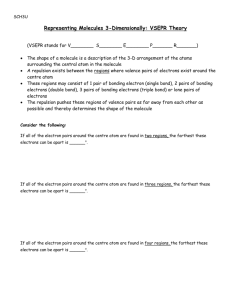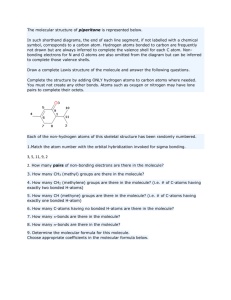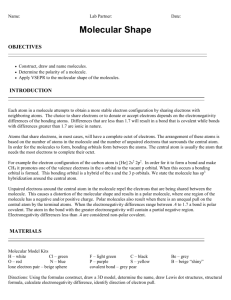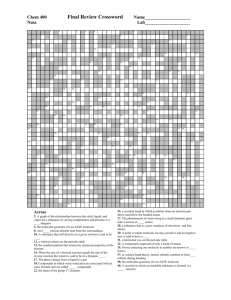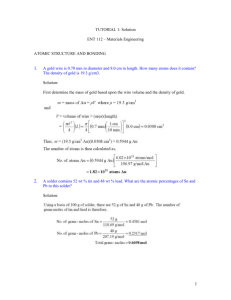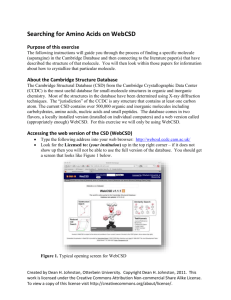7.3 Shapes of Molecules
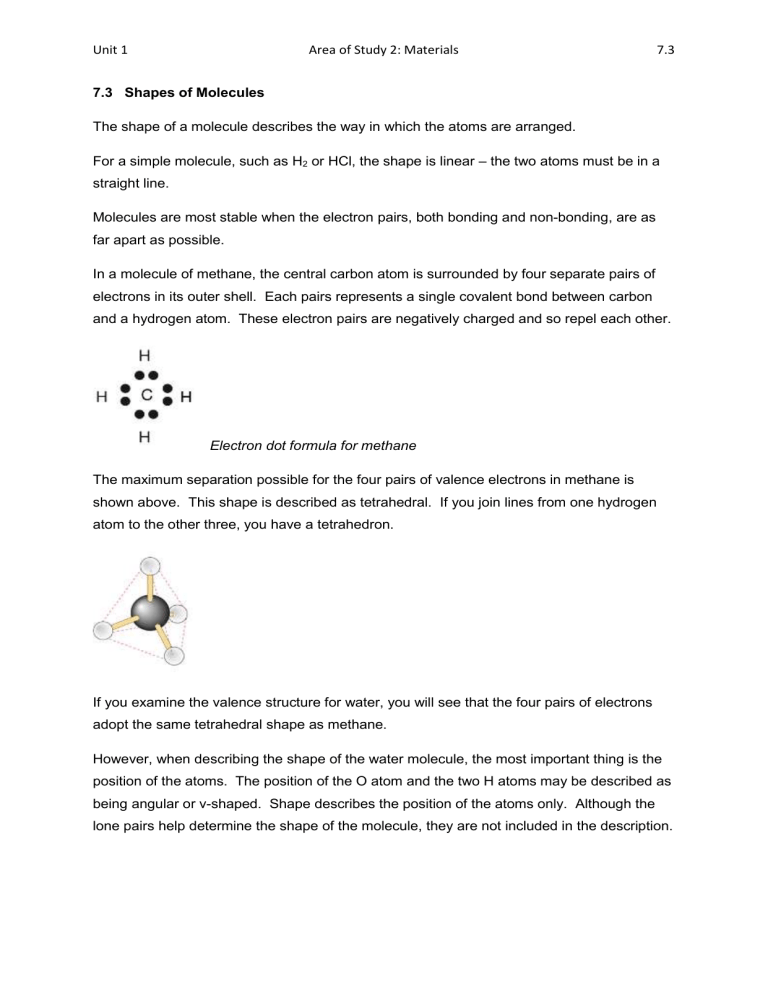
Unit 1 Area of Study 2: Materials 7.3
7.3 Shapes of Molecules
The shape of a molecule describes the way in which the atoms are arranged.
For a simple molecule, such as H
2
or HCl, the shape is linear – the two atoms must be in a straight line.
Molecules are most stable when the electron pairs, both bonding and non-bonding, are as far apart as possible.
In a molecule of methane, the central carbon atom is surrounded by four separate pairs of electrons in its outer shell. Each pairs represents a single covalent bond between carbon and a hydrogen atom. These electron pairs are negatively charged and so repel each other.
Electron dot formula for methane
The maximum separation possible for the four pairs of valence electrons in methane is shown above. This shape is described as tetrahedral. If you join lines from one hydrogen atom to the other three, you have a tetrahedron.
If you examine the valence structure for water, you will see that the four pairs of electrons adopt the same tetrahedral shape as methane.
However, when describing the shape of the water molecule, the most important thing is the position of the atoms. The position of the O atom and the two H atoms may be described as being angular or v-shaped. Shape describes the position of the atoms only. Although the lone pairs help determine the shape of the molecule, they are not included in the description.
Unit 1 Area of Study 2: Materials 7.3
Carbon dioxide (CO
2
)
In carbon dioxide molecule consists of 2 double bonds.
The four electron pairs are concentrated in two regions of negative charge only. These two regions repel each other and so assume positions as far from each other as possible on opposite sides of the carbon atom.
The two oxygen atoms and the carbon lie in a straight line and so the molecule has a linear shape.
Unit 1 Area of Study 2: Materials 7.3
Drawing Electron Dot and Valence Structures
Step 1. Write the electronic configuration, in shell notation, for all atoms present and determine their covalency.
Step 2.
Step 3.
Step 4.
Step 5.
Step 6.
Identify the central atom. This is usually the atom with the highest covalency.
Determine the number of electrons that must be involved in covalent bonding.
Determine the number of bonding pairs and the number of line pairs.
Determine the arrangement of electron pairs (bonding electrons and lone pairs) so that they are arranged as far from one another as possible around the atoms.
Draw a diagram of the molecule and classify its shape based on the relative position of the atoms in it.
Text Questions: 7 – 8
Workbook: 17




